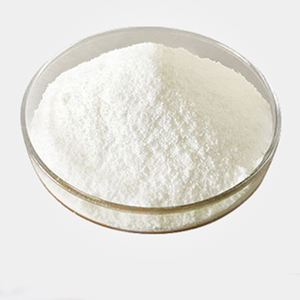Introduction to Nano Silicon Dioxide: A Crucial Nanomaterial for Advanced Technologies
Nano silicon dioxide (nano-SiO two), additionally called nanosilica, has emerged as a foundation product in modern-day scientific research and engineering due to its exceptional physicochemical residential properties. With fragment dimensions usually listed below 100 nanometers, nano-SiO two exhibits high surface, thermal stability, mechanical strength, and tunable sensitivity. These qualities make it vital across a broad range of industries– from electronic devices and medicine to building and construction and power storage. As nanotechnology remains to develop, nano-SiO two is playing a progressively important duty in making it possible for next-generation products and devices with improved performance and sustainability.
(Nano Silicon Dioxide)
Architectural Attributes and Synthesis Techniques
Nano silicon dioxide exists in different morphologies consisting of spherical fragments, mesoporous frameworks, and core-shell setups, each offering distinctive useful benefits. It is manufactured with methods such as sol-gel processing, chemical vapor condensation, fire pyrolysis, and rainfall from silica precursors like tetraethyl orthosilicate (TEOS). Surface area alteration techniques– such as silanization– are typically employed to boost dispersibility and compatibility with organic matrices. Exact control over bit size, porosity, and surface area chemistry enables customized applications in finishings, compounds, medicine delivery systems, and digital elements.
Useful Functions in Material Reinforcement and Composite Engineering
One of the most impactful uses of nano-SiO â‚‚ hinges on composite materials, where it functions as a strengthening agent to enhance mechanical toughness, solidity, and abrasion resistance. When integrated right into polymers, ceramics, or metals, nano-SiO â‚‚ boosts lots transfer between stages, decreases fracture propagation, and boosts wear resistance. In epoxy resins and rubber substances, it enhances tensile stamina and thermal stability. Furthermore, nano-SiO â‚‚ is used in self-cleaning surfaces and anti-fouling finishes because of its hydrophilic nature and photocatalytic task under UV direct exposure. These capacities are driving technology in aerospace, automotive, and aquatic sectors.
Applications in Electronic Devices and Semiconductor Technology
In the electronic devices market, nano silicon dioxide plays a dual role as both an architectural and functional product. It serves as a gateway dielectric in thin-film transistors and as a passivation layer in semiconductor tools as a result of its superb protecting residential or commercial properties and compatibility with silicon substratums. In microelectromechanical systems (MEMS) and nanoelectronics, nano-SiO two is used in insulation layers, interconnects, and sensor parts. Additionally, its capacity to be patterned at the nanoscale supports improvements in photonic crystals, quantum dots, and incorporated optical circuits. These applications underscore its value in miniaturized, high-performance digital systems.
Payments to Biomedical and Pharmaceutical Innovations
Nano-SiO â‚‚ has actually found significant application in biomedicine, particularly in drug distribution, diagnostics, and imaging. Its high surface area permits reliable loading of restorative agents, while surface functionalization makes it possible for targeted release mechanisms. Mesoporous silica nanoparticles (MSNs), a subclass of nano-SiO â‚‚, are widely studied for regulated drug shipment and genetics therapy as a result of their consistent pore structures and biocompatibility. In addition, nano-SiO â‚‚ is utilized in biosensors, oral compounds, and antimicrobial finishes. Ongoing research concentrates on improving biodegradability and minimizing long-lasting poisoning to make sure risk-free clinical release.
Function in Sustainable Energy and Environmental Technologies
( Nano Silicon Dioxide)
The energy and environmental sectors are leveraging nano-SiO â‚‚ for boosted battery performance, solar cell performance, and pollution reduction. In lithium-ion batteries, nano-SiO two is used as a binder and conductive additive to maintain silicon-based anodes, which experience quantity expansion during cycling. It likewise enhances electrolyte stability and charge-discharge effectiveness. In photovoltaics, nano-SiO two functions as an antireflective coating and encapsulation product to safeguard solar batteries from wetness and degradation. Moreover, it is utilized in catalysis and filtering membrane layers for CO â‚‚ capture, water purification, and air top quality improvement, lining up with global sustainability objectives.
Market Trends and Industrial Adoption Characteristics
The global market for nano silicon dioxide is experiencing robust growth, driven by boosting demand from electronics, healthcare, and advanced production sectors. Key players are investing heavily in scalable manufacturing modern technologies and surface-engineered versions to meet application-specific requirements. Asia-Pacific leads in production ability, adhered to closely by North America and Europe. Nevertheless, challenges remain regarding cost-effectiveness, regulative conformity, and reproducibility of product homes. Strategic collaborations between academia, sector, and government companies are speeding up standardization initiatives and industrial fostering.
Challenges and Poisoning Factors To Consider
Despite its widespread usage, nano-SiO two provides specific health and wellness and ecological issues that call for cautious assessment. Breathing of great particulates may posture breathing threats, demanding strict taking care of methods and work-related precaution. Lasting biocompatibility research studies are recurring, especially for biomedical applications. From a commercial viewpoint, agglomeration problems and diffusion security in intricate matrices can impact performance consistency. Resolving these obstacles entails optimizing fragment morphology, creating safer-by-design strategies, and carrying out lifecycle evaluations to make sure liable usage throughout fields.
Future Overview: Combination with AI, Quantum, and Smart Systems
Looking in advance, nano silicon dioxide is poised to play a crucial role in arising technical frontiers. Developments in synthetic intelligence-driven products discovery will certainly accelerate the design of nano-SiO â‚‚-based composites with optimized buildings. Combination with quantum computing designs– where SiO two functions as an ultra-pure dielectric– is opening brand-new paths in qubit stabilization. Furthermore, wise products integrating responsive nano-SiO â‚‚ layers are being established for flexible optics, self-healing layers, and real-time architectural tracking systems. As nanotechnology merges with digital and lasting advancement goals, nano-SiO â‚‚ will certainly remain a key enabler of sophisticated technology.
TRUNNANO is a supplier of Nano Silicon Dioxide with over 12 years of experience in nano-building energy conservation and nanotechnology development. It accepts payment via Credit Card, T/T, West Union and Paypal. Trunnano will ship the goods to customers overseas through FedEx, DHL, by air, or by sea. If you want to know more about Nano Silicon Dioxide, please feel free to contact us and send an inquiry(sales5@nanotrun.com).
Tags:silicon dioxide nanopowder,nano silicon dioxide,sio2 gel
All articles and pictures are from the Internet. If there are any copyright issues, please contact us in time to delete.
Inquiry us

